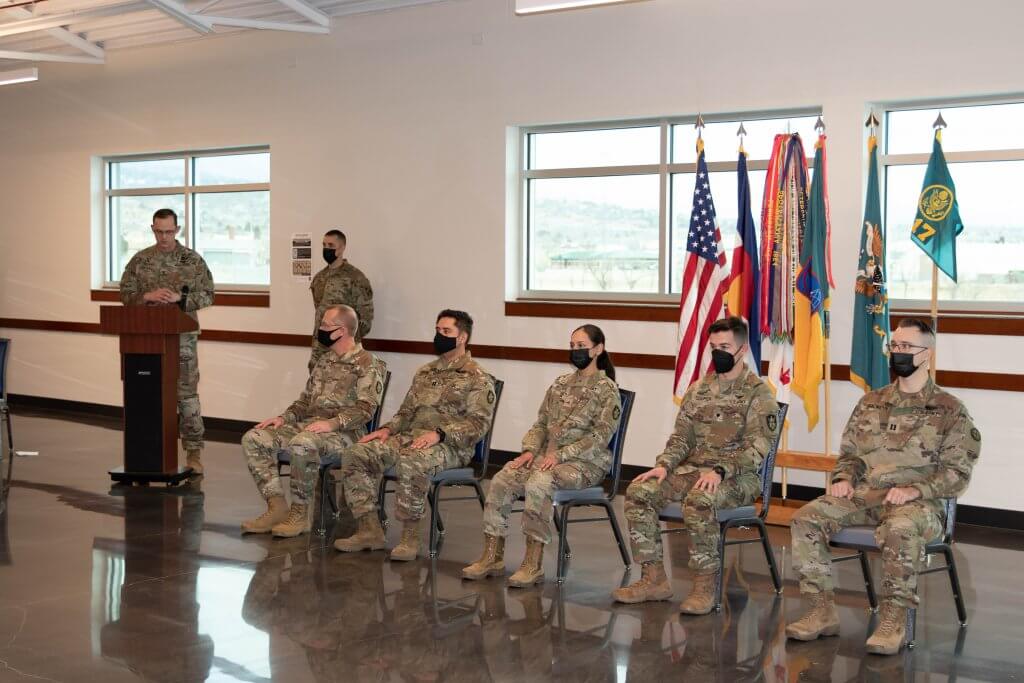A unique team of six National Guardsmen will provide space support to Army and Combined Joint Forces operations for the next several months.
The Colorado National Guard’s Army Space Support Team 16 deployed to the CENTCOM area of operation in March, supporting the 35th Infantry Division’s mission to augment Combined Land Component Forces and provide space support as needed. They replaced the 117th’s ARSST 22.
Team 16’s deployment objective is to coordinate, integrate, synchronize and execute space and technical operations. The space support team works to enhance the effectiveness of warfighters in real-time scenarios, improving mobility, communication and the ability to shoot.
“To boil it down, really what we do is, we take information that we can glean from space-based assets in areas such as … position-navigation timing, GPS satellite imagery, some type of electronic warfare. Whether it’s active or passive,” said ARSST team lead Maj. Tom Dell. “We’re more about knowledge of that and how it could be used.”
The Army’s Space and Missile Defense Command (USASMDC) deploys support teams via the 1st Space Brigade based at Peterson Air Force Base, Colorado. The USASMDC is the force modernization proponent for space, high altitude and global missile defense the Colorado National Guard indicated. The 1st Space Brigade is the only space brigade in the Army and oversees five missile defense batteries located in Japan, Turkey, Israel and Saudi Arabia.
ARRST 16 creates space-based information, providing comprehensive intelligence, data and potential outcomes to down-trace units and those who use it at the division level and higher.
RELATED: New National Guard squadron expands US military presence in space
“So instead of telling an infantry unit, ‘Hey, there’s gonna be a solar flare on this day,’ and they kinda look at us and go, ‘What the hell you talking about,’ we say, ‘Well, this could impact your UHF communications, could happen from this time to this time, there’s no guarantee that will happen. But there’s a chance,’” Dell said.
On their recent mission ARRST 16 supported a wide spectrum of ongoing situations and delivering it to entities throughout the CENTCOM area.
“Obviously, a lot of things were going on with Ukraine and Russia,” Dell said. “And so while things were still getting spun up, we were looking at that area, and trying to find out who we could potentially send information to…we’re the team that just got back from Kuwait last month, and we were looking at what was going on in Ukraine.”
The 12 teams that comprise the Army’s 117th Space Battalion do not operate within the parameters of specific geographical zones but are attached to a division or higher-level entity, offering space knowledge and expertise.
Dell said space is in flux, changing daily, and the team engages people possessing varying degrees of space knowledge. So adaptability is a must for ARRST 16 personnel.
“And so we have to constantly change what we’re saying, how we’re saying it, based on who we’re saying it to,” he said. “We have to kind of tailor everything, every report we make and everything else to that situation, and to that person and…the current environment.”
What Dell has seemingly learned about the acquisition, coalescence and dissemination of space information is that it’s dynamic and subject to change.
“It’s definitely interesting and … you have to think flexible in this job because you never know which direction you’re going to go, what people are looking for, to try and help them with it,” he said.
ARRST 16 is part of the Guard’s 217th Space Company, 117th Space Battalion. The 117th is positioned with the 100th Missile Defense Brigade based in Colorado Springs, Colorado.

